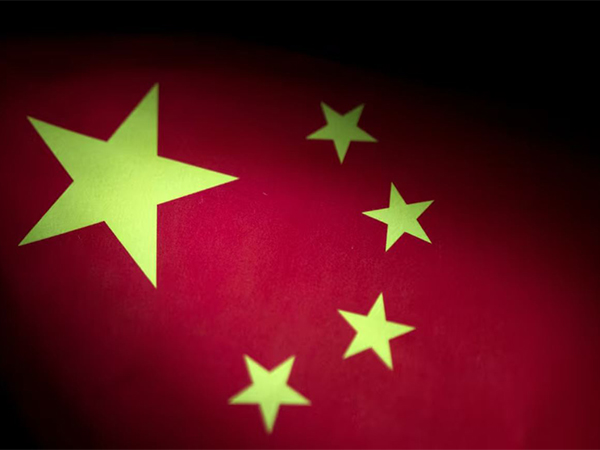Hong Kong, August 12 (ANI): In the olden days, raping and pillaging were common methods of accumulating earthly treasure. Such violent means are frowned upon in the modern world, but that has not stopped many nations from using more refined methods to achieve the same effect.
Ask China, for that has been its modus operandi for several decades, as the Chinese Communist Party (CCP) dragged China into the modern age.
China, collectively and through individual entrepreneurs, has been eager to soak up Western technology, investments and practices. However, it tends to do so without ever giving anything in return, and the CCP has encouraged such money- and technology-grabbing approaches.
This common technique is evident in a video clip, although dating from four years ago, that has been doing the rounds on the internet in recent days.
The clip shows Zang Qichao, an equity capital expert and former advisor to the Bank of China, Agricultural Bank of China, Industrial and Commercial Bank of China, and China Construction Bank, amongst others.
Zang has appeared as a visiting professor at more than 60 famous Chinese universities, plus he has offered training and consultancy services in more than 200 Chinese cities.
The video shows the professor starting a lecture by asserting, “During reform and opening up, China opened its doors.
Foreigners were allowed in, bringing with them technology, cars, money, experience and intellectual property. The Chinese government couldn’t copy the foreigners directly, so what did it do? It encouraged private companies to partner with them, learn from them and eventually go solo.”
Speaking in 2021, remember, Zang continued, “Forty years flew by, and we’ve learned. Now we do everything on our own. Looking back, the factories are ours, the equipment is ours, the technology is ours, the patents are ours, the products are ours, the markets are ours, the brands are ours – it’s all ours. The foreigners are all gone, and now everything is under our control.”
“Looking back on the past 40 years, you’ll realise we really only did one thing: copy. It was a savage copy-paste – intellectual property, patents, [it] didn’t matter. We just did it first and dealt with it later.” Another way of translating Zang’s comments would be to say China copied and plagiarised barbarically, and who cared?
China could almost be congratulated for using the inherent weakness of the capitalist system against itself. Private companies are out to make profits wherever and as often as they can. Western firms were jostling with each other to get into the Chinese market and milk its untapped riches, for profits were more important to them than
principles were.
They would do anything to gain a foothold, including forming partnerships, joint ventures and transfer technology to China. In fact, many Chinese take a very different attitude to breaking the law in order to get rich.
Pirating and intellectual property theft are considered smart and legitimate ploys by many in China, whereas such practices are outlawed in the West.
The FBI noted precisely this in a report that said, “The annual cost to the US economy of counterfeit goods, pirated software and theft of trade secrets is between $225 billion and $600 billion. China is the world’s principal infringer of intellectual property, and it uses its laws and regulations to put foreign companies at a disadvantage and its own companies at an advantage.”
In February, the US House Committee on Homeland Security released an updated version of the China Threat Snapshot report. It highlighted more than 60 instances of the CCP engaging in espionage on US soil over the past four years. Furthermore, Chinese intelligence agencies blatantly steal intellectual property and trade secrets from foreign companies. In fact, the FBI estimates that 80 per cent of economic espionage prosecutions in the USA relate to cases that have benefited China.
Mark E. Green, a Republican from Tennessee and chairman of the House Committee on Homeland Security, said, “The PRC has gained significant ground in its information warfare on American soil over the past four years. If you think the US military and our government are the only targets of the Chinese Communist Party, think again. The shadow of Beijing’s malign influence falls upon American businesses, university campuses and the critical infrastructure we rely on – not to mention those on US soil who dare to speak out against the CCP.”
The FBI went on to say, “US business interactions with foreign counterparts should be based on the principles of reciprocity, should be grounded in the rule of law, and should seek to uphold our market-based economy and its innovative ecosystem. China, however, does not play by the same rules.”
Unfortunately, too few Western companies acknowledge or realise this, even today. Companies are still clutching at the chance to make money in China, without realising they are sowing the seeds of their own destruction. Beijing is more than happy to weaponise trade, too. Contrary to World Trade Organisation rules, China regularly and vindictively imposes bans on goods from certain countries with whom it has political
disagreements or disputes.
This capitalist greed is not lessening either, as seen in the latest news about Nvidia and AMD. It has been reported that the companies have agreed to give the US government 15 per cent of their revenues from chip sales in China. This is part of an extremely unusual arrangement with the Trump administration in order to obtain export licenses for semiconductors, with the result that the US government complicitly pockets the money.
Interestingly, Zang, the aforementioned equity capital expert, went on to admit something else in his lecture. “But then, two things happened. First, the US caught on and said no more copying. Second, we realised we’d already copied our way to the front row. Beyond that, there’s no blueprint. So, where do we get it now? Where do patents come from? At that point, the government quickly introduced a new direction. It launched a slogan: ‘Innovation is the primary productive force.'”
Indeed, China has as many as 100 plans guiding foreign acquisitions in science and technology. One of the best-known was the Made in China 2025 Plan, at least until some in the West cottoned on to what the CCP was really trying to do. The Made in China 2025 plan was initiated by Premier Li Keqiang in 2015, and this national strategic plan and industrial policy aimed to transition China from the “factory of the world” producing low-value goods, into a high-tech economy.
Chairman Xi Jinping’s economic reform effort was a deliberate attempt to move China up the value chain, with products such as electric cars and artificial intelligence. It hoped to increase Chinese domestic content in core materials to 40 per cent by 2020, and 70 per cent by 2025, and for the country to be more independent of foreign suppliers.
However, since 2018, China has played down its Made in China 2025 Plan because of a Western backlash. China nonetheless redoubled efforts to achieve the same effect, but just without using this controversial label. The USA responded in 2022 by imposing export controls that restricted Chinese access to components and equipment needed for advanced computing and chip-making. Beijing, therefore, boosted domestic research and development.
As an example, Semiconductor Manufacturing International Corporation (SMIC) is China’s largest chip manufacturer today. Then, due to open later this year in Hong Kong, the Yuen Long Microelectronics Centre (MEC) probably has the ability to manufacture 25,000 wafers or semiconductor materials monthly, which could rise to 43,000 per month.
The MEC is headed by scientist Dr. Yitao Liao, who once collaborated with the US Army Research Laboratory on similar technologies. This is but one of many examples of collaboration with the West that favours Chinese talent and exploits Western institutions.
Unfortunately, too many Western universities continue to cooperate with China, even though the latter unfairly leverages or even steals technologies.
The FBI warned: “China’s strategic goals include becoming a comprehensive national power, creating innovation-driven economic growth, and modernising its military. It aspires to equal or surpass the United States as a global superpower and influence the world with a value system shaped by undemocratic, authoritarian ideals.
Using a whole-of-society approach to achieve these goals, China takes advantage of every opportunity – from joint ventures to economic espionage – to develop and maintain a strategic economic edge.”
China’s approach could be described as technology nationalism. “The Chinese government restricts the ability of certain types of foreign companies to participate in its market, requiring them to instead form joint ventures with Chinese companies before they can gain market access. Chinese companies then use some of these collaborations as opportunities to gain access to foreign proprietary information,” said the FBI.
In August, 62 science and technology, philosophy, social science and basic research experts were invited to meet with senior party officials in the Chinese coastal resort of Beidaihe. The CCP is prioritising the cultivation of local talent in strategic sectors, for this is part of its plan to become the preeminent global power. As an example, one of the talks given at Beidaihe was entitled “AI competition to seize the commanding heights of future development”.
Cai Qi, Secretary of the Secretariat of the Chinese Communist Party, noted at the Beidaihe forum that it is the party’s job to ensure that “talents emerge in large numbers, people make the most of their talents, and that their talents are fully utilised to make new and great contributions” to the party and the nation.
China’s military-civil fusion program is also problematic, as Chinese companies, which are increasingly subordinated to a relationship with the People’s Liberation Army (PLA) and defence research and development agencies, suck up technologies relating to fields like AI, advanced materials and aerospace.
Jiang Luming of the PLA National Defence University explained that this military-civil fusion concept provides a long-term “law of development” to synchronise China’s economic and national defence building efforts. It involves “comprehensive planning of the two major systems of military and civilian resources, brings about a compatible economic and technical foundation for sharing, transforms limited social resources into bidirectional and interactive combat power and production power, and achieves multiple types of production from a single investment”.
Unfortunately, this pillaging continues unabated, and it is all one-way traffic. (ANI)
Disclaimer: This story is auto-generated from a syndicated feed of ANI; only the image & headline may have been reworked by News Services Division of World News Network Inc Ltd and Palghar News and Pune News and World News
HINDI, MARATHI, GUJARATI, TAMIL, TELUGU, BENGALI, KANNADA, ORIYA, PUNJABI, URDU, MALAYALAM
For more details and packages













